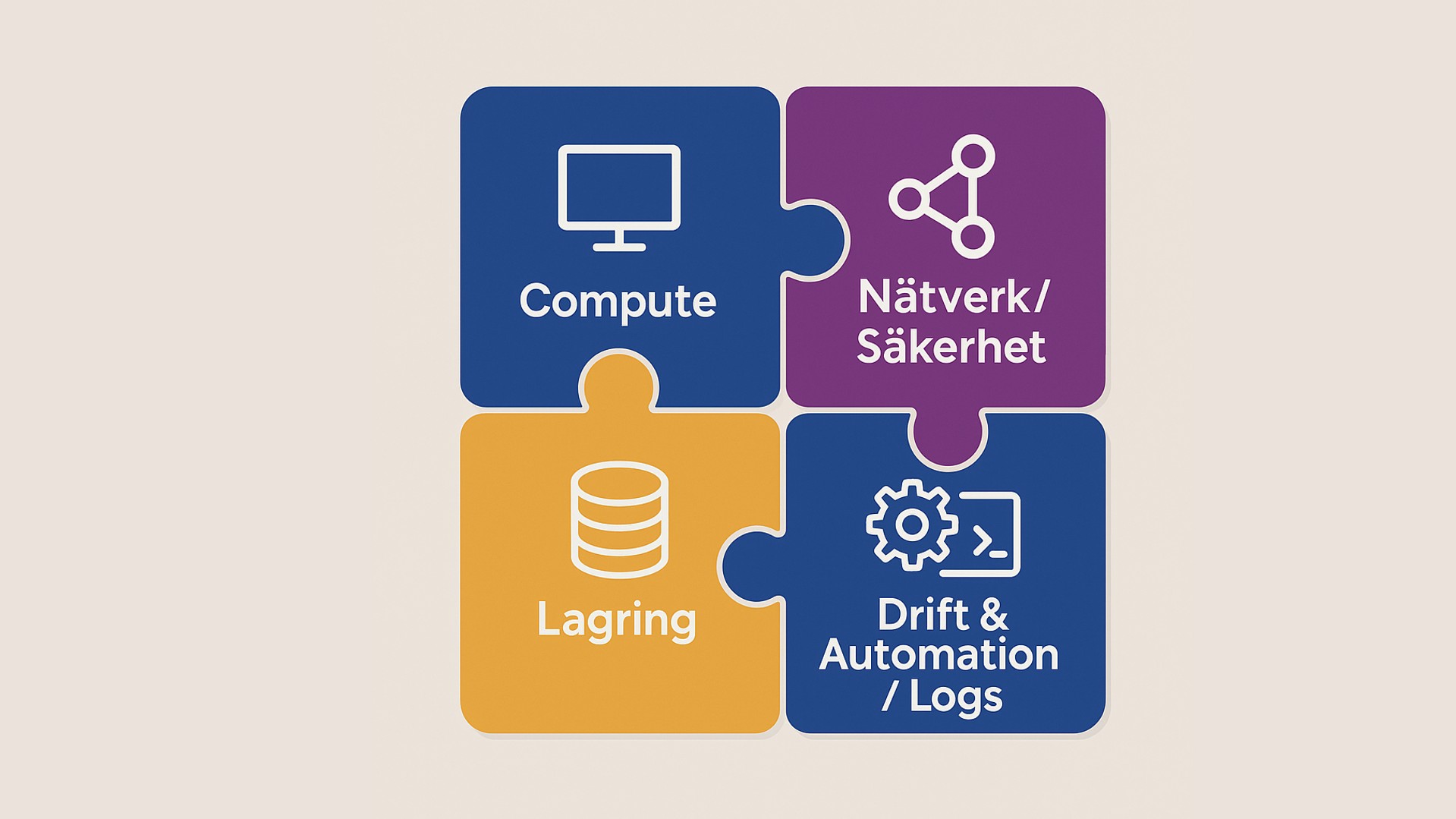Windows Server - Advanced Security and Services

Denna kurs ger dig kunskaper och färdigheter till att förbättra säkerheten hos en IT-infrastruktur baserad på Windows Server 2022 och dess tjänster.
Du lär dig skydda administrativa autentiseringsuppgifter och rättigheter för att säkerställa att berörda roller endast kan utföra de uppgifter de behöver. Kursen beskriver också hur du kan lindra hot från skadlig programvara, identifiera säkerhetsproblem genom att använda revision och funktionen Advanced Threat Analysis (ATA).
Kursen förklarar också hur du kan använda kryptering och dynamisk åtkomstkontroll, och hur du kan förbättra ditt nätverks säkerhet. En hel del fokus läggs på att konfigurera och hantera IIS för att med bibehållen säkerhet stötta en mångfald av webbapplikationer.
Den här kursen är avsedd att hjälpa till att ge nödvändiga färdigheter som stödjer ett brett utbud av webbapplikationer säkerhet och kunskap för att stödja andra produkter som använder Windows Server-kopplade tjänster. I linje med det målet kommer denna kurs inte att fokusera på någon specifik webbapplikation eller utvecklingspraxis.
Söker du en kurs i allmän konfiguration och administration av Internet Information Services (IIS), rekommenderar vi vår kurs Internet Information Services - Configuring and Administering IIS on Windows Server.
Windows Server 2025 på Cornerstone
Gå på djupet med tekniker som Active Directory, säkerhet, prestanda och hybridmolnstöd samt datacenter-teknologier som Hyper-V, Failover clustering, Load Balancing och Storage Spaces.
Målgrupp och förkunskaper
Den här kursen är för IT-proffs som behöver administrera Windows Server 2022-nätverk på ett säkert sätt. Deltagarna arbetar vanligtvis med nätverk som är konfigurerade som Windows Server-domänbaserade miljöer, med hanterad åtkomst (managed access) till Internet och molntjänster.
För att hänga med i kursens tempo och tillgodogöra dig dess innehåll förutsätts du besitta vissa grundkunskaper.
- Erfarenhet av att arbeta som tekniker i en Windows Server-baserad infrastruktur.
- Erfarenhet av administration, underhåll och felsökning av Windows Server.
- En gedigen, praktisk förståelse för nätverksfunktionalitet, inklusive TCP/IP, User Datagram Protocol (UDP) och Domain Name System (DNS).
- En solid, praktisk förståelse för principerna rörande Active Directory Domain Services (AD DS)
- En gedigen, praktisk förståelse för Microsoft Hyper-V.
- En förståelse för Windows Servers säkerhetsprinciper.
Dessutom har du nytta av tidigare erfarenhet av Windows Server-operativsystem, till exempel erfarenhet som Windows Server-systemadministratör. En förståelse för Windows PowerShell är fördelaktigt.
För att alltid hålla en hög kvalitet på våra kurser använder vi både engelsk- och svensktalande experter som kursledare.
Detaljerad information
Kursmaterialet är på engelska, med detta innehåll:
Protecting credentials and privileged access
Explains how you can configure user rights and security options, protect credentials by using Windows Defender Credential Guard, implement privileged-access workstations, and manage and deploy a local administrator-password solution that you can use to manage passwords for local administrator accounts
Advanced auditing and log analytics
Explains how to use advanced auditing and Windows PowerShell transcripts.
Securing workloads
Describes the Microsoft Advanced Threat Analytics tool and explains the Security Compliance Toolkit (SCT), including how you can use it to configure, manage, and deploy baselines. Additionally, students will learn how to deploy and configure Hyper-V and Windows Server containers.
Planning and protecting data
Explains how to configure Encrypting File System (EFS) and BitLocker drive encryption to protect data at rest. Students will also learn how to extend protection into the cloud by using Microsoft Azure Information Protection.
Optimizing and securing file services
Explains how to optimise file services by configuring File Server Resource Manager (FSRM) and Distributed File System (DFS). Students will learn how to protect a device’s data by using encryption or BitLocker. Students also will learn how to manage access to shared files by configuring Dynamic Access Control (DAC).
Just Enough Administration
Explains how to deploy and configure the Just Enough Administration (JEA) feature.
Understanding and Installing Internet Information Services
Provides a basic overview about the network infrastructure planning and common concerns with implementing a web server. This module teaches students to perform an installation of IIS and verify the working web server by testing the default created website. The ability to install components and test functionality when needed will be continually reinforced throughout the course
Configuring the Default Website
Describes how to plan and implement network requirements for a public website. Students will configure DNS records to support access to internal and public websites and create virtual directories and application folders for additional website content. These concepts will be built upon in future modules and students begin to work with different bindings for both internal and external websites and web applications.
Configuring and Managing Application Pools
Provides students with the details and the benefits to the application pool architecture. Students will create and configure application pools to support additional applications and configure application pool recycle settings. This module teaches students to perform recycle events and examine the event logs for recycle events
Creating Additional Websites
Introduces students to the process on how to examine existing website bindings to determine and resolve naming conflicts. This module teaches students to create new websites using unique bindings and avoiding naming conflicts.
Securing Websites and Applications
Introduces students to secure internal and public websites for users and groups by using the built-in Anonymous, Windows and Basic authentication. This module also teaches students to configure file system permissions for specific users and groups and secure a website using URL Authorization Rules.
Managing Certificates in the Centralised Store
Describes how to install and configure the Microsoft Internet Information Service feature Central Certificate Store to enable centralized and improved certificate management. This module will teach students to configure a website to use a secured binding with the Central Certificate Store and explore the benefits to centralized certificate management. Students will also learn to properly name certificates for the store
Backing Up and Restoring IIS
Focuses on the concepts of recovering a website and web server from failure. This module teaches students how to manage, backup and recover the configuration files, along with requirements for recovering content and certificates.
Relaterat innehåll


